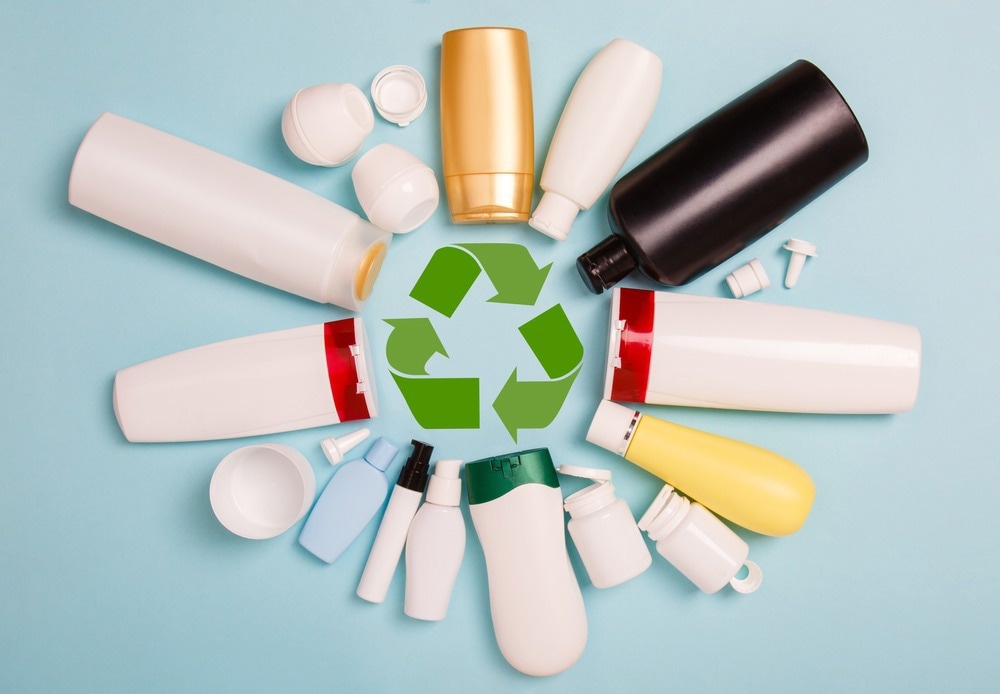Plastics are materials with properties essential to the modern world. They are adjustable, strong, versatile, long-lasting, and reasonably priced. High-density polyethylene (HDPE) is widely used in single-use applications such as packaging and containers. It is mostly seen labeled with the number two inside the triangular recycling symbol.

Image Credit: JasminkaM/Shutterstock.com
However, the methods used to manufacture HDPE and the methods currently used to recycle it endanger both human health and the health of the planet. Numerous HDPE products are produced from fossil fuels (natural gas, crude oil, or coal) and have a huge carbon footprint. Instead of being reused or recycled, waste HDPE is incinerated, dumped in landfills, or litters the environment. During recycling, the quality of the material also degrades.
Researchers at the DOE’s Institute for Cooperative Upcycling of Plastics (iCOUP) in the United States have created a method for recycling HDPE. iCOUP scientists from DOE’s Argonne National Laboratory and Cornell University used a novel catalytic approach to transform waste HDPE plastic into a new material that could be recycled repetitively without losing quality.
Plastics are going to be with us forever. They provide functionality that no other material can provide. We need to find ways to reduce the harmful effects of plastic use by improving recyclability.
Massimiliano Delferro, Scientist, Argonne National Laboratory
The novel strategy developed by the team converts used HDPE into a completely recyclable and presumably biodegradable material with the same mechanical and thermal properties as the starting single-use plastic. Approaches like this, if widely accepted, could ultimately help to reduce the carbon emissions and pollution linked with HDPE.
We are using waste plastic as our source instead of fossil fuels. Instead of drilling for oil and polluting the environment, we’re using stuff that would otherwise be incinerated or left in a landfill.
Geoffrey Coates, Scientist, Cornell University
HDPE, like other plastics, is made up of long chains of atoms known as polymer chains. The group’s new method breaks the HDPE polymer chains into shorter pieces with reactive groups of atoms at the ends using a series of catalysts—or chemicals that expedite chemical reactions.
These pieces can then be reassembled or repolymerized to create new plastic products. The reactive end groups also make the new plastic easier to decompose in the lab and, potentially, in nature.
The first round of catalysis was carried out by the Argonne team on used HDPE products such as water jugs and packaging. The catalysts choose at random which points in the polymer chains to change to make them reactive. The longer the researchers leave the HDPE with the catalyst, the more the chains are activated.
The Cornell group then revealed these activated polymer chains to another catalyst. At this point, the catalyst breaks up the chains and modifies the ends to allow reassembly.
The biggest challenge was to replicate the same material properties of HDPE in the new material, like strength and flexibility versus brittleness. When the catalysts break up the HDPE, it is significant that there persist enough long polymer chains to connect to each other like threads, making the material more durable to stress.
When the Cornell group originally repolymerized the catalyzed material, it was far more brittle than the starting HDPE. The catalysts were then fine-tuned to break up the polymer chains in a way that allows for a measured amount of branching when the material was repolymerized. Because of this branching, chains can form off of the end groups, significantly increasing the length of the chains in the resulting material. This approach resulted in a material with almost the same properties as the initial HDPE and increased recyclability.
Future research will focus on evaluating the biodegradability of the new material and decreasing the amount of valuable metal used for the catalyst to lower the total recycling cost. The group hopes to expand its strategy to include other common plastics.
The study was published in the Journal of the American Chemical Society.
Other contributors include Alejandra Arroyave from Argonne and Shilin Cui, Andrew Kocen, Anne LaPointe, and Jaqueline Lopez from Cornell University.
The research was funded as part of iCOUP, an Energy Frontier Research Center funded by the DOE Office of Science, Basic Energy Sciences at Argonne and Ames Laboratory.
Journal Reference:
Arroyave, A., et al. (2023) Catalytic Chemical Recycling of Post-Consumer Polyethylene. Journal of the American Chemical Society. doi.org/10.1021/jacs.2c11949.